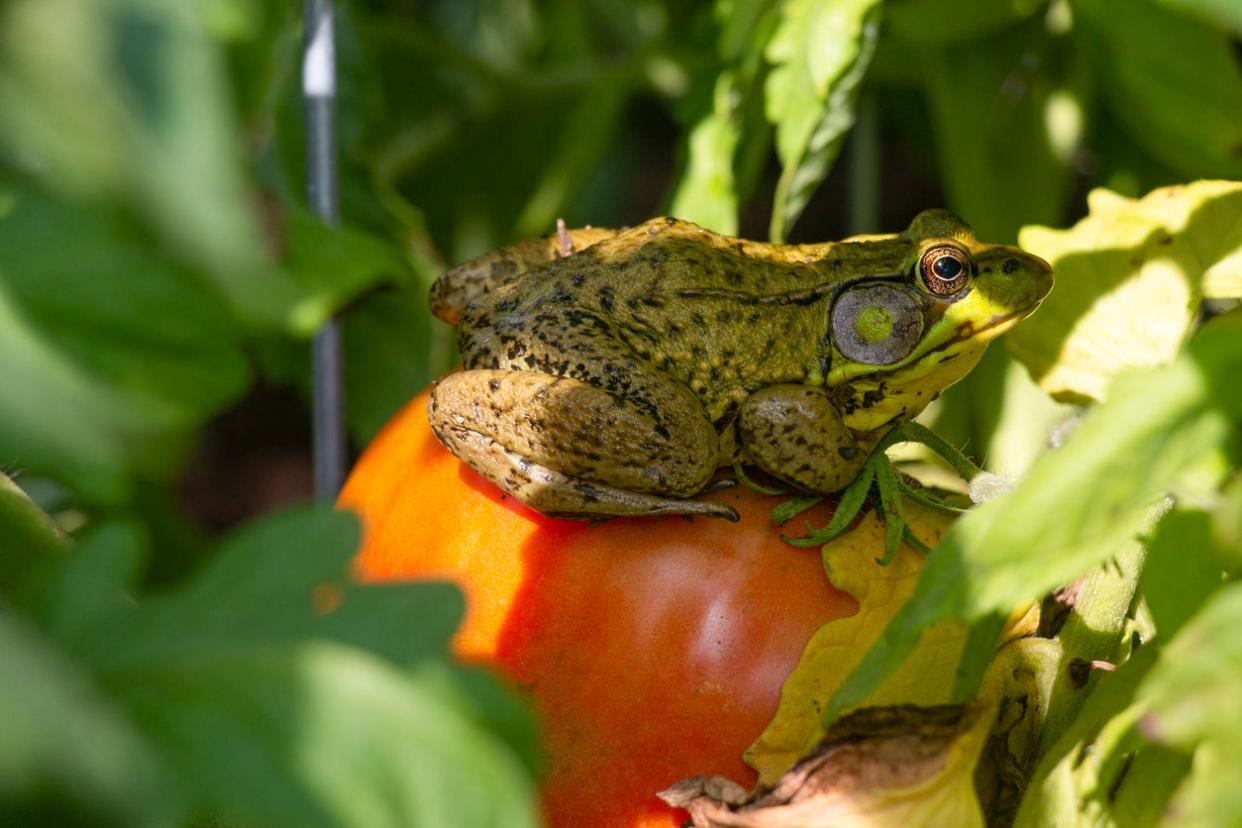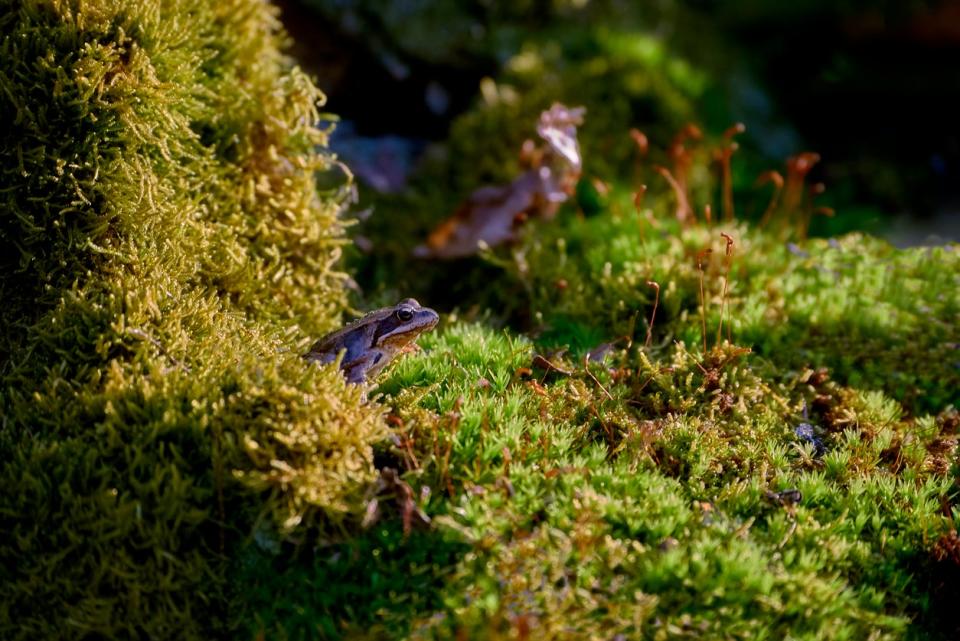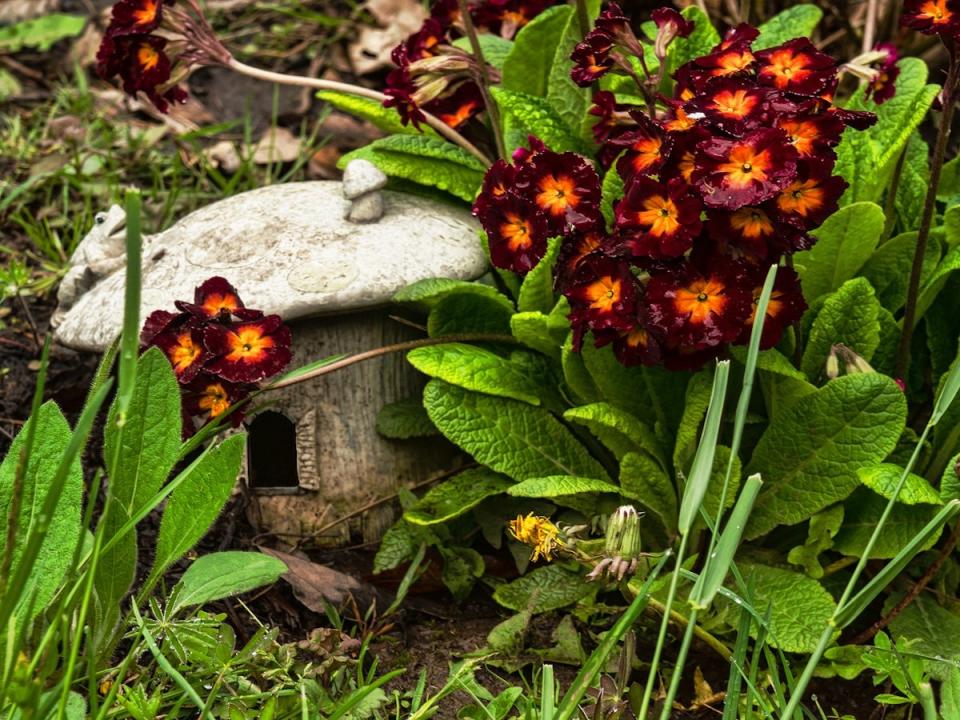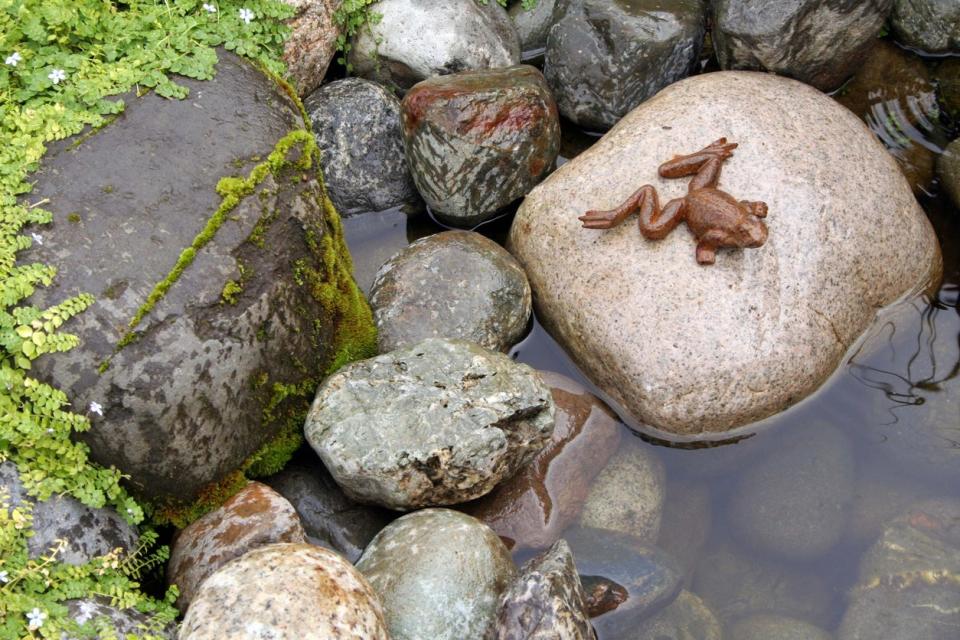How to Attract Frogs and Toads to Your Yard—and Why You Should

Frogs and toads may not have the same allure as bees and other pollinators, but they can be just as useful in gardens—especially if you want to control pests organically. These voracious insect eaters aren’t picky about what they eat and they’ll happily chow down on any garden pest they can fit into their mouths, including slugs, snails, cutworms, cabbage loopers, flies, grasshoppers, June bugs, and other beetles. Even more impressive, it’s estimated that just one toad can eat between 50 and 100 insects in a single night, which amounts to roughly 10,000 to 20,000 insects in a growing season. An incredible feat for a creature that can fit in the palm of your hand!
In North America, there are about 101 species of frogs and toads, including tree frogs, leopard frogs, bullfrogs, and the charmingly plump American toad. In rural areas, warm nights come alive with the melodic song of spring peepers or the thrumming of bullfrogs as they call to each other in the dark. However, frogs and toads don’t need a lot of space to roam and they’ll feel right at home in backyard gardens that provide the proper balance of shelter, food, and water. In the tips ahead, you’ll learn how to attract toads and frogs to your garden space and make nature work for you by using friendly neighborhood amphibians for natural pest control.
Avoid chemicals.
If you want to attract frogs and toads to your garden, the most important step is to swap out chemical pesticides, fertilizers, and herbicides for organic alternatives. Not only do pesticides kill off the insects that frogs and toads rely on, but amphibians can absorb chemicals through their skin and hopping through a treated lawn or garden can prove fatal.
Luckily, there are plenty of organic techniques that will improve the growth of lawns and gardens and won’t affect the health of frogs and toads. Crop rotation, floating row covers, and companion planting are all frog-friendly ways to control pests, while a well-timed application of compost or worm castings can naturally boost the growth of lawns and gardens.

Photo: istockphoto.com
Grow native plants.
Once frogs and toads have tackled your garden pest problem, they may travel elsewhere in search of food if there aren’t many insects left in your yard. But if you’d like these helpful amphibians to stick around for a while, you may want to grow a few native plants, like coneflowers, black-eyed Susan, yarrow, buttonbush, and Joe Pye weed. Native plants are lower maintenance than non-natives and they generally don’t require much supplemental water or fertilizer. But beyond that, native plants provide natural shelter for frogs and toads and their blooms are more attractive to insects—a fact which hungry amphibians will most certainly appreciate!
Build a toad house.
Toads are technically a type of frog, although they tolerate drier conditions than true frogs and they spend most of their time on dry land. However, both frogs and toads like to huddle against bare soil in dark, moist areas and making a proper toad house can lure these critters to your garden and encourage them to stay. Stacked logs, loosely bundled brush piles, leaf litter, or rock piles provide natural resting places for frogs and toads during the summer heat.
You can also make a DIY toad abode by placing a small terra-cotta planter on its side and filling it with some soil. Or, if you prefer the goblincore vibe, install a mushroom-shaped toad house like this highly rated option available at Amazon near a water feature.

Photo: istockphoto.com
Add a water feature.
Of course, no frog-friendly garden would be complete without a water feature—but you don’t need anything fancy. A terra-cotta saucer filled with water will refresh any toads that hop into your garden, while a shallow pond, ditch, or other water feature that’s at least 6 inches deep by 2 to 3 feet wide will encourage frogs to move in and start making tadpoles.
Frogs and toads are more likely to use water features that are in shady locations or near toad houses and other hiding spots. And don’t forget to clean out water features from time to time for frog health and to keep mosquitoes at bay.
Get a little messy.
Frogs and toads are mighty insect predators, but they can become prey to larger animals, like hawks, foxes, and skunks. Allowing grass to grow a bit taller and planting ornamentals around the edges of frog ponds and toad houses will help visiting amphibians feel a bit safer in your yard. Finally, leave some autumn leaves in place at the end of the year so that toads have somewhere cozy to hibernate in winter.

Photo: istockphoto.com